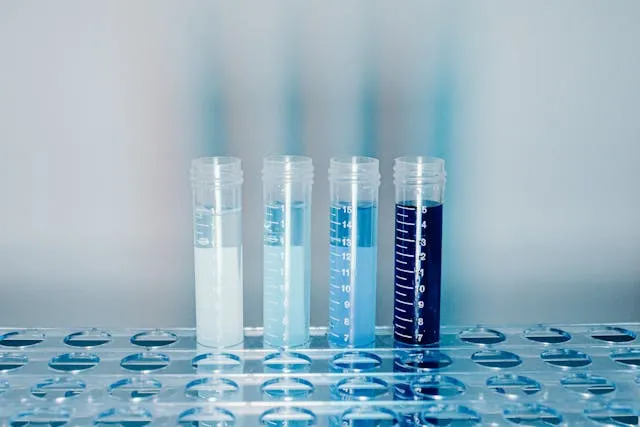Precision on Every Curve: The Science of Automotive Color Measurement

In the automotive industry, color is more than just appearance—it represents a brand’s identity, influences consumer perception, and reflects the quality of manufacturing. Today’s drivers expect their vehicles to look sleek, uniform, and flawless, whether it’s a luxury sedan or an economy hatchback. This demand has pushed manufacturers to adopt highly advanced techniques in automotive color measurement, ensuring precision and consistency across every panel.
The process of measuring automotive paints and measuring automotive coatings is both a science and an art. Let’s explore how manufacturers achieve perfect color harmony across millions of vehicles—and why color measurement is critical in modern automotive production.
Also read: Menu de Ciel! Bistro-Bar Discover Fine Dining with a 360 View
Why is Automotive Color Measurement So Important?
In a typical vehicle, dozens of individual parts are painted separately—doors, hoods, bumpers, and mirrors—often in different facilities or even countries. Despite this, they must look exactly the same when assembled. Any mismatch, even by a fraction, is noticeable and unacceptable to both car manufacturers and customers.
Accurate automotive color measurement ensures that each painted component matches perfectly, regardless of the substrate, location of painting, or lighting conditions.
Key reasons include:
Color Consistency: Ensures that each car rolling off the production line meets strict quality standards.
Brand Identity: Maintains the visual identity of automotive brands known for specific signature colors.
Customer Satisfaction: Prevents costly repaints, warranty claims, and brand damage from visible mismatches.
Efficiency: Reduces waste and rework, contributing to lean manufacturing goals.
What Makes Measuring Automotive Paints So Challenging?
Unlike textiles or plastics, automotive paints and coatings are multi-layered systems designed to offer not just color but also protection, gloss, and durability. These systems usually include:
Primer: For adhesion and corrosion protection
Basecoat: The actual color layer
Clearcoat: Provides gloss and UV resistance
Together, they create a finish that changes under different lighting and angles. This is particularly true for metallic or pearlescent paints, which exhibit color flop—a noticeable shift in appearance depending on the viewing angle.
As a result, measuring automotive coatings requires capturing not just the color, but also the texture, gloss, and angle-dependent properties.
Key Technologies in Automotive Color Measurement
1. Multi-Angle Spectrophotometers
The most common tool for automotive color measurement is the multi-angle spectrophotometer. Unlike traditional single-angle devices, these instruments measure how a color appears from multiple viewing angles—typically between 15° to 110°.
These measurements help quantify:
Color flop in metallic or pearlescent finishes
Gloss level and surface texture
Flake orientation in effect pigments
Multi-angle spectrophotometers provide detailed color data in Lab*, reflectance curves, and other standardized formats, enabling manufacturers to maintain tight color tolerances.
2. Colorimeters
Colorimeters are used for less complex applications or quick checks. While not as advanced as spectrophotometers, they offer rapid measurements and are often used on the production floor for spot-checks.
3. 3D and Imaging-Based Color Tools
Some manufacturers use digital imaging devices and 3D color analyzers that evaluate the painted surface in real-time. These tools integrate camera systems, lighting, and AI software to provide comprehensive data on color and surface appearance.
These systems are especially useful in automated inspection environments where rapid throughput and real-time quality control are essential.
The Process of Measuring Automotive Paints and Coatings
The typical process of measuring automotive paints includes the following steps:
Surface Preparation
The surface must be clean, smooth, and representative of the actual painted part. Measurement areas are usually chosen based on their visibility and uniformity.
Instrument Calibration
Devices are calibrated using reference tiles or certified color standards to ensure accurate readings.
Multi-Angle Measurement
The paint is measured at several predefined angles to capture variations due to reflection and light scattering.
Data Analysis
Readings are compared against target color values, and any deviations (ΔE) are calculated. Tolerances are often extremely tight—sometimes as low as ΔE < 0.5.
Feedback Loop
If deviations are detected, corrections are made in the paint formulation, spray parameters, or curing process.
Measuring Automotive Coatings in Production
Color measurement doesn’t end with the lab. In real-world production, measuring automotive coatings must be fast, reliable, and integrated with digital systems. Some best practices include:
Inline Measurement Systems: Mounted on robotic arms or conveyors to measure paint during application.
Data Logging and Traceability: Every measurement is recorded and tracked, making it easier to identify and correct issues.
Standardized Conditions: Controlled lighting, temperature, and humidity are maintained for repeatable results.
These systems help detect issues such as:
Inconsistent gloss or matte levels
Haze or orange peel defects
Incorrect pigment distribution
Coating thickness variations
Industry Standards and Compliance
To ensure global consistency, the automotive industry relies on standards such as:
ISO 7724 (Color Measurement of Paints)
DIN 5033 (Colorimetry)
ASTM E308 (Spectral Data for Color Matching)
Complying with these ensures that automotive color measurement is consistent across manufacturers and suppliers worldwide.
The Role of Digital Color Matching
Modern color management software allows manufacturers to simulate and adjust paint formulations digitally. Using measured data, these platforms can:
Suggest corrections in pigment ratios
Simulate final appearance under different lighting
Communicate color standards across global teams
This digital transformation is making the process of measuring automotive paints faster, more accurate, and more sustainable.
Conclusion: A Future Driven by Precision
From showroom appeal to long-term durability, automotive color measurement plays a pivotal role in the modern vehicle manufacturing process. As technologies evolve, the precision in measuring automotive paints and measuring automotive coatings will only become more refined.
Automakers, suppliers, and paint manufacturers must work in sync—guided by data, standards, and smart tools—to deliver the flawless finishes today’s customers expect. In a world where the smallest variation can impact the final product, color measurement isn’t just about looks—it’s about excellence.
